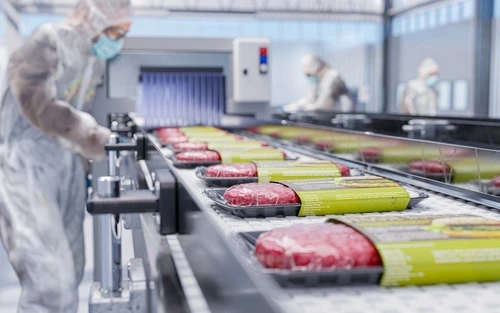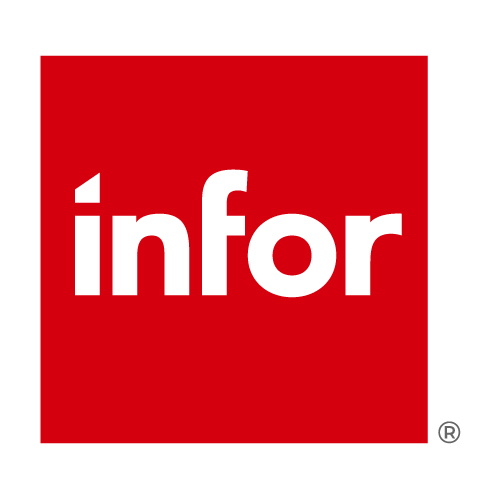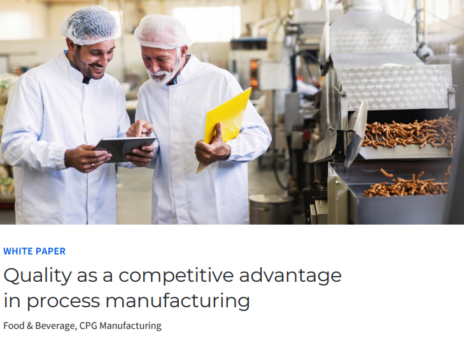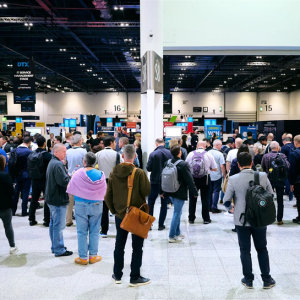
F&B has grown to become one of the largest sectors on earth – and one of the most competitive. According to work by Vantage, the industry is predicted to be worth $4.4trn by 2028, while another study has found that nearly 72% of food manufacturers focus on competitor sentiment metrics when making decisions around investment or marketing.

Given these considerations – to say nothing of the fact that supply chain costs are rising – it’s no wonder that F&B companies are increasingly being forced to distinguish themselves from the competition. That’s especially true given how rapidly consumer habits are shifting.
Between the power of sustainability, rising enthusiasm for health foods, and the eagerness of customers to understand where products come from, manufacturers are having to react in kind – something that’s only possible with the right digital platform in place.
Changing trends
Especially since the pandemic, what the public wants from their F&B providers has developed dramatically. At its simplest, that was true in terms of where they got their food: restaurants were out, and retail or home delivery was in.
Given its nature, meanwhile, Covid-19 also saw an increased commitment of consumers to healthy eating, with 31% of people in a 2020 survey by Archer Daniels Midland stating that the experiences of lockdown pushed them to buy more products tailored to health and nutrition, something compounded by a related surge in industry R&D.
That’s echoed by the rising importance of environmentalism, with over 80% of consumers claiming that their F&B purchases are affected by a product’s sustainability, according to a poll co-conducted by Menu Matters. No wonder Marcel Koks should describe modern F&B as one where customers demand “perfect” service across the board.
Yet as the industry and solution strategy director of food and beverage at Infor goes on to explain, giving customers what they want in a rapidly changing market is far from straightforward – if manufacturers remain reliant on antiquated tools anyway. Traditionally dependent on manual checks in warehouses, he explains it can be hard to separate produce by region, or else provide the precise products customers want at speed.
It goes without saying, moreover, that the same drawbacks make it challenging to fulfil other customer demands. Without the data to rigorously analyse supply chains, for instance, it’s much more difficult to provide information on the provenance of products. The same is true of wider sustainability questions around greenhouse gas emissions – hardly irrelevant when, according to recent work by Aytm, 52% of consumers now want to know the impact their food choices have on the world.
At the same time, there’s growing evidence that if manufacturers aren’t flexible enough to give consumers what they want, they’re more than happy to jump ship. As Koks notes, retailers are already “putting pressure on producers” to provide relevant information around ingredients, while 2022 work by Morning Consult found that more than a third of F&B customers were willing to switch brands if their trust was shaken – a figure higher than consumers in any other industry.
The digital advantage
How can ambitious F&B manufacturers support these varied consumer expectations, even as they boost their agility in other areas of the business? One answer involves investing in an ERP expressly built for F&B, providing firms with the power to gather and leverage their data.
That’s true, Koks argues, even when it comes to the most basic customer habit: how exactly they get their food. “Successful organisations that could deal with the pandemic in a very smart way had an advantage in digitisation,” he says. “They had a platform where they could see that demand is switching out of restaurants to retail – or maybe even to direct home delivery – and had systems in place to react quickly.”
This argument feels reasonable: with deep and user-friendly insights on sales and supply chains, systems like Infor’s make it easy to see where consumer winds are blowing – and adapt accordingly.
Similar advantages are obvious when reacting to other consumer concerns. Around F&B transparency, for instance, the underpinning of data facilitated by ERPs allows manufacturers to give customers all the sourcing information they could want, while integrating packaging features like QR codes that can even link to videos of products before they hit the shelves.
As Koks explains, these technologies can fulfil other demands as well. In a sector gripped by nutrition, for example, data-based QR codes can offer buyers useful tips on how to cook their food healthily. “It’s also a marketing thing,” he adds, suggesting that by linking punters to their products via data, manufacturers can turn products into thoroughgoing brands – important when 2021 research by Nielsen shows that this subsector is growing faster than private label alternatives.
In a broader sense, tools like Infor’s CloudSuite Food & Beverage platform ensure manufacturers can keep up with how customer habits might develop in future. Especially with the rise of Gen Z foodies, a demographic characterised by an interest in snacking and clean eating, among other trends, robust data analysis allows managers to understand who is purchasing their products – and craft new offerings accordingly.
In the same vein, having a clear grasp of new markets can help inform advertising efforts. Once again, Gen Z is sparking a revolution here, with a study by Edelman finding that young customers particularly value recommendations from friends and family, as well as trusted professionals like culinary influencers.
Making relevant professional contacts early surely makes sense, even as customer habits continue to evolve.








